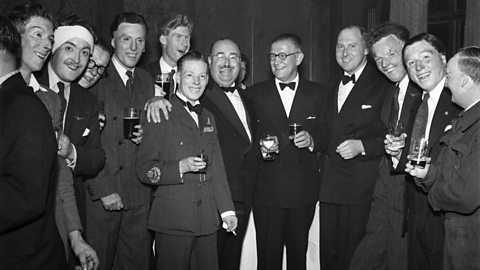Impact of World War Two
During World War Two, there were further developments in surgery. Additionally, the evacuation of children to the countryside resulted in pressure to improve health care provision for people who lived in poverty.
The Guinea Pig Club and Archibald McIndoe

Archibald McIndoe was born in New Zealand and was a cousin of Harold Gillies. During World War Two, he worked with soldiers who had suffered severe facial injuries, especially from burns. McIndoe treated the physical injuries. He also supported soldiers who had difficulties with their mental health as a result of severe disfigurement from physical injuries.
McIndoeÔÇÖs patients formed a support network known as the Guinea Pig Club. The club organised social events. It also helped recovering soldiers adapt to civilian life and learn to live with their injuries. The club became well known and was visited by the war-time prime minister, Winston Churchill.
Blood transfusions
Charles Drew was an American surgeon. He came up with new methods to store and transport blood. When World War Two began, Drew was put in charge of a campaign called Blood for Britain. This involved US civilians donating blood, which was transported to Britain using DrewÔÇÖs techniques. It was then used to treat injured British civilians and soldiers in blood transfusionWhen people are given blood via a drip.
Evacuation
During World War Two, evacuation led to 3 million children moving to the countryside, so they were safe from the bombing of towns and cities. Many people in rural areas were shocked at the levels of poverty they witnessed in some of the evacuated urban children. This led to support for social reform and a commitment to help families in need of assistance. In turn, this helped to pave the way to the foundation of the NHSThe National Health Service (NHS) is a free health care system in the UK. in 1948.
Penicillin
During World War Two, penicillinAn antibiotic produced by a fungus, Penicillium. Discovered by Alexander Fleming. was mass produced for the first time. Howard Florey and Ernst ChainÔÇÖs success in mass producing the first antibioticsSubstances that control the spread of bacteria in the body by killing them or stopping them reproducing. meant US soldiers injured at Normandy landingsCommonly known as D-Day, it was the point that Allied forces landed in Normandy, France in June 1944, to retake Europe. were all given penicillin to reduce the risk of infection.